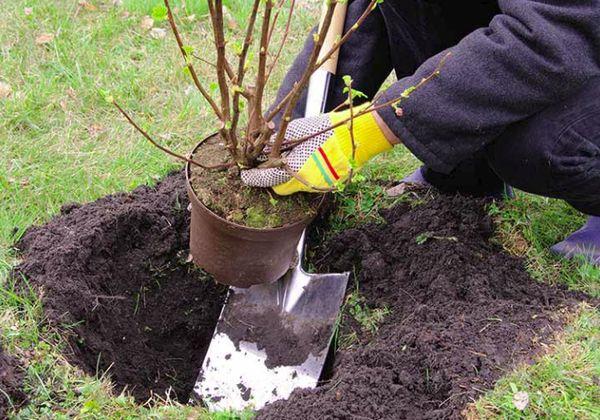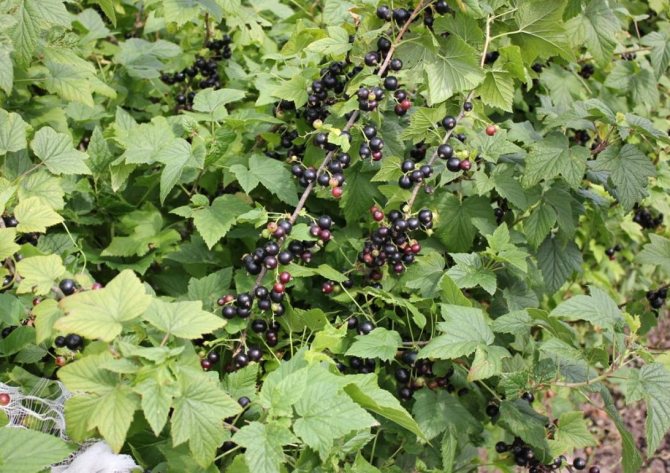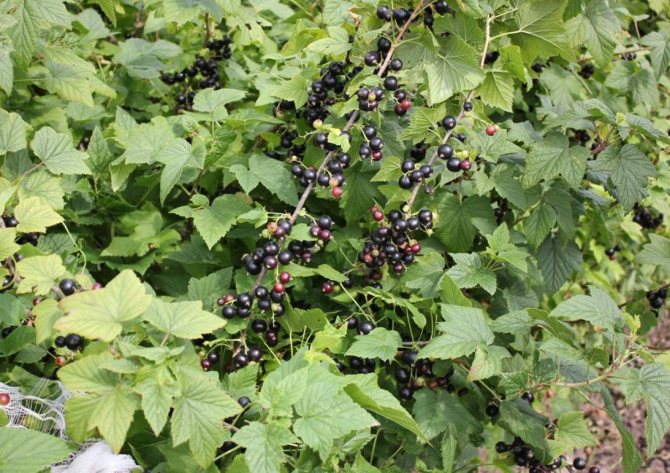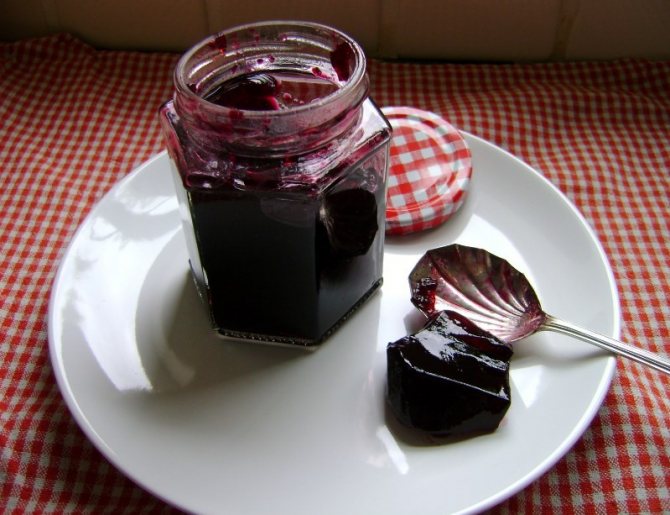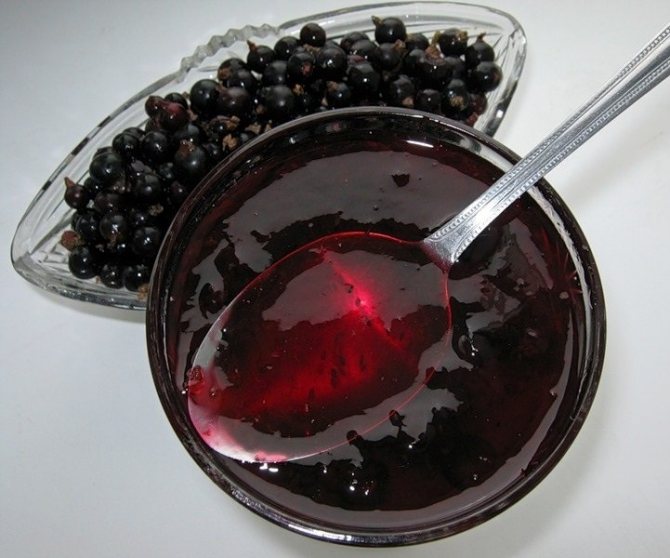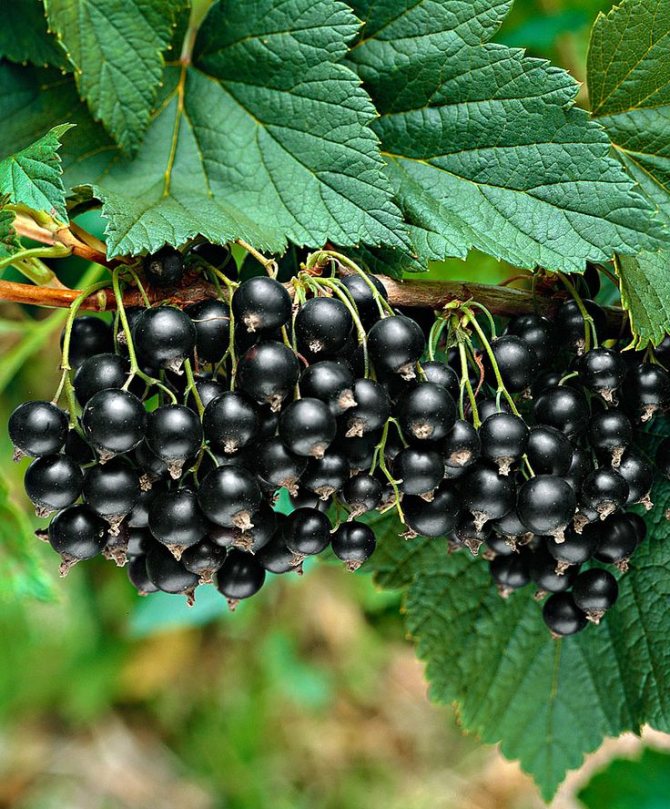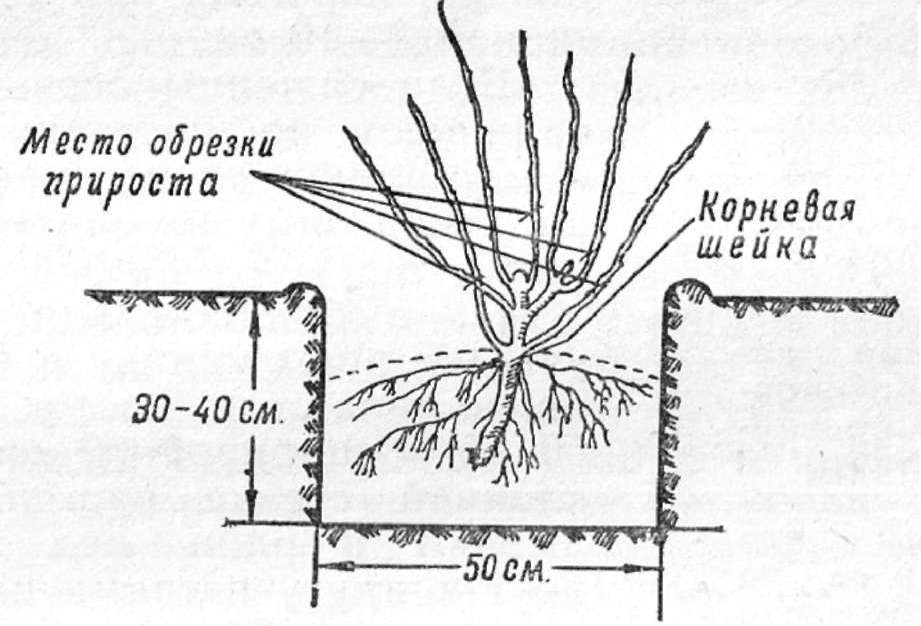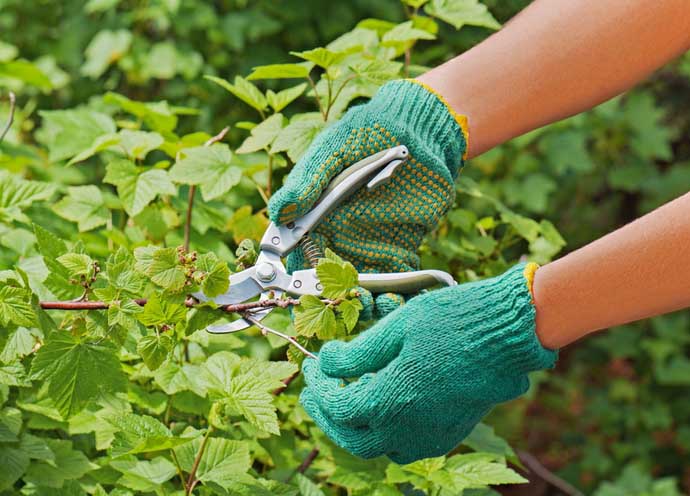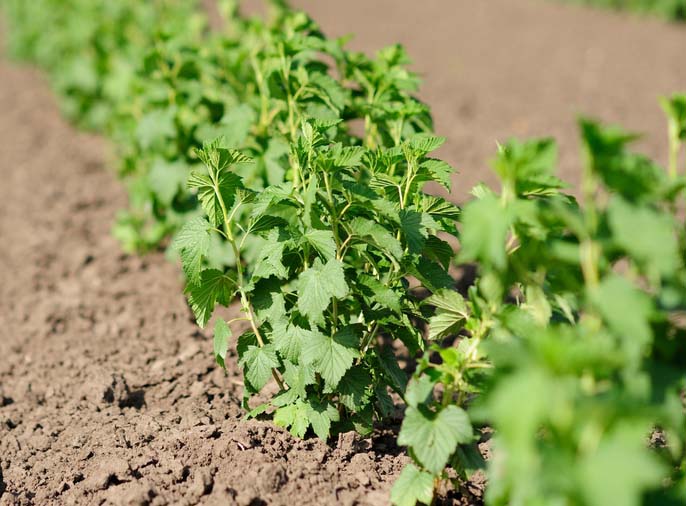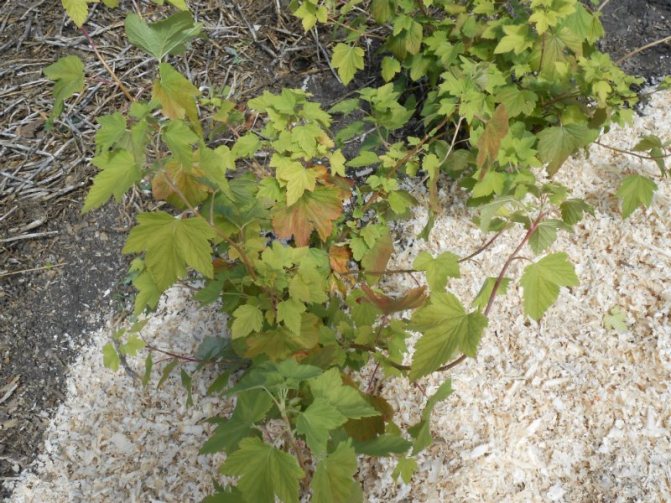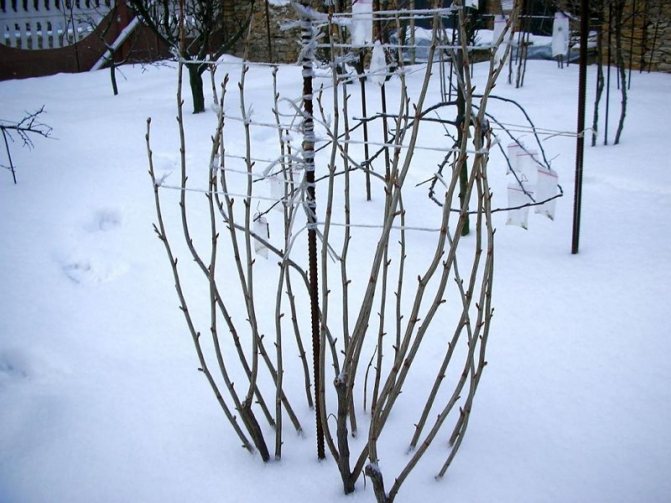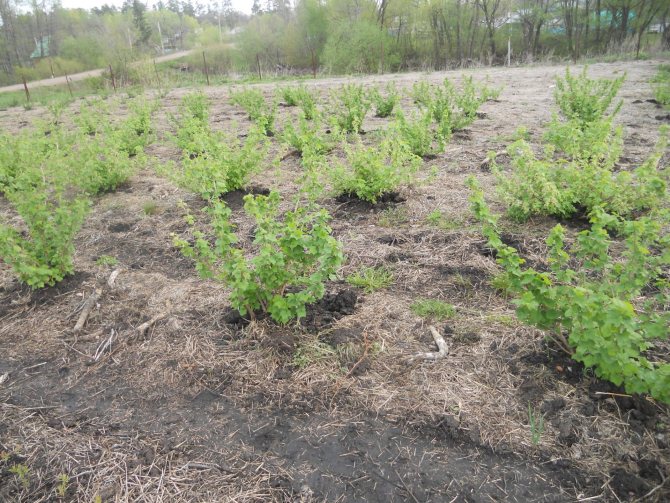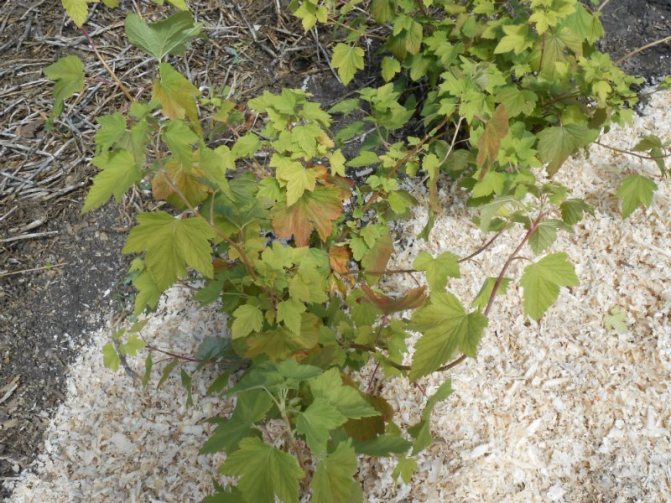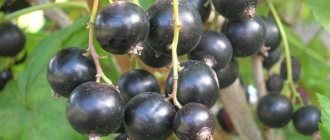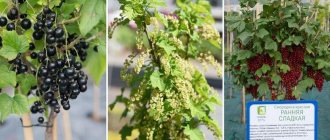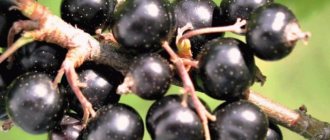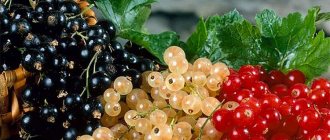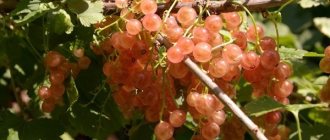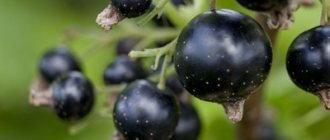Description of black currant Selechenskaya and Selechenskaya-2
The Selechenskaya black currant was obtained at the All-Russian Research Institute of Lupine by Doctor of Agricultural Sciences A.I. Astakhov and added to the State Register of Varieties in 1993. The variety turned out to be quite promising, but fastidious to regular care. And already in 2000 A.I. Astakhov in collaboration with L.I. Zueva improved the variety, giving it the name Selechenskaya-2, which was included in the State Register in 2004.
Description of the Selechenskaya variety

Selechenskaya black currant bush of medium size, dense
The shrub is capable of growing up to 1.5 meters in height, compact. Shoots are straight, gray-beige, pubescent. The lamina is medium in size, five-lobed, dull green.
Racemes small, straight or slightly sinuous, without pubescence. They contain 8-12 flowers. The flowers are faded, of medium size. Purple sepals.
Rounded berries, large, glossy black color. The rind is not too firm. The stalk is green, not very thick. The harvest ripens amicably. The separation of berries is dry. Very sweet, with a characteristic aroma. Each berry weighs about 3-5.5 g.
The yield of the variety reaches 99c / ha.


Berries of the Selechenskaya variety are sweet, with a pronounced aroma
Description of the variety Selechenskaya-2


Selechenskaya-2 bush at the time of berry ripening
Semi-spreading shrub, grows up to 2 meters in height. Shoots are colored chestnut with a grayish tint. The leaf plate is of medium size, three-lobed, bright green in color, slightly wrinkled, dense. The lobes of the leaf are pointed-elongated, with hefty serrations along the edge.
Racemes rather long, curved, without pubescence. 9-14 flowers are placed on them. The flowers are of average size, reddish-purple in color.
Fruits are round, large, colored black. The rind is dense, glossy. The peduncle is not very thick, colored green. The crop ripens early enough. Berries can hang on branches for quite a long time without crumbling. The separation of berries is dry. The berries are quite sweet, moderately aromatic. Each berry weighs 4–6 grams.
The yield of the variety is significant. Each bush can yield 2–4 kg of berries.
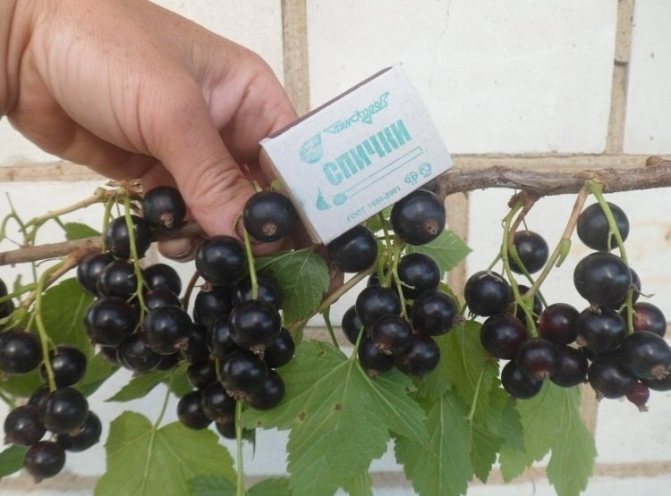

The berries of the Selechenskaya 2 variety are slightly larger than the fruits of the Selechenskaya
Video: currant Selechenskaya-2 at the time of harvest ripening
These varieties are quite similar, however, they have characteristic differences. Let's consider them in the table below.
Distinctive features of Selechenskaya and Selechenskaya-2 currants - table
| Compared parameters | Selechenskaya | Selechenskaya-2 |
| Plant height (m) | 1,5 | 1,9 |
| Berry weight (g) | 3–5,5 | 4–6 |
| Bush yield (kg) | 5 | 2–4 |
| Tasting assessment | 4,9 | 5 |
| Heat resistance | High | High |
| Frost resistance | High | Medium, damage to 50% of the ovary is likely due to recurrent frosts. |
| Whimsical care | High | Average |
| Disease and pest resistance | Resistant to powdery mildew. Affected by a kidney mite. | Resistant to powdery mildew. Not susceptible to kidney mite attacks, but affected by aphids. |
Gardeners reviews
And I have it one of the sweetest.There are several other varieties, I don't know the name, unfortunately, I planted Selechenskaya 2 in the fall and I'm very happy.
Natalia Delait
In the conditions of the Selechenskaya municipal district, it is a productive variety, resistant to recurrent frosts, low temperatures, and powdery mildew. One treatment in early spring is enough for anthracnose and kidney mites. Taste quality at "4" on a five-point scale. The size of the berries depends on the level of agricultural technology. The variety is responsive to fertilizing and watering during dry periods.
Natalia Andrianova
Selechenskaya-2 is superior in all respects to Selechenskaya. So much so that after 15 years of growing the latter, he even removed it from the collection. For 8 years of cultivation, Selechenskaya 2 has established itself on my site as one of the best early and large-fruited varieties.
Antipenko G.L.
Delicious dessert variety. The berry is large. The separation is dry. I collect from the bush in one approach, you need to let the whole berry ripen.
Svetlana Strawberry
I only have a personalized Selechenskaya 2, I really like its sweet and harmonious taste, I didn’t really like black currant before, but this one was to my taste, I eat fresh with pleasure. Maybe I haven't tasted anything sweeter.
Songbird
Plant, grow black currants on your plots. You will not have to regret the effort and time spent on nursing her. The reward will be an eye-pleasing rich harvest of delicious and medicinal berries.
Greetings! I am 51 years old. An economist by education. In copywriting, 1 year. Rate the article:
- 5
- 4
- 3
- 2
- 1
(1 vote, average: 5 out of 5)
Share with your friends!
Advantages and disadvantages of varieties
Like all plants, the Selechenskaya and Selechenskaya-2 black currants have a certain set of positive and negative qualities.
| Dignity | disadvantages |
| Quite an impressive size of berries. | In the absence of proper care, fruit shrinkage is observed. |
| Ripe berries do not fall off for a long time. | The moisture content of the soil should be monitored. |
| High frost resistance. | Average resistance of both varieties to anthracnose. The Selechenskaya variety is especially susceptible to kidney tick damage. |
| Rich annual yield. | The Selechenskaya variety is especially capricious to the content of nutrients in the soil. |
Landing features
Planting Selechenskaya and Selechenskaya-2 black currants is no different from planting other early-ripening currant varieties. There are some specifics to look out for though.
When to plant
It is advisable to plant currants either in late autumn or early spring, until the buds begin to open.
How to prepare a place
For growing black currants, it is preferable to choose a place with light fertile soil and neutral PH. The ideal option would be to plant currants on the southern side of the site, protected from drafts and excessively scorching sun.
It is advisable to place bushes near fences that will shade them from direct sunlight. It is advisable to choose an even place for seedlings: the presence of pits and bumps can significantly reduce productivity.
As already mentioned, the Selechenskaya variety is picky about the nutrient content of the soil. Therefore, before planting seedlings, nutrients should be added to the depleted soil. Approximately 3 months before planting, 9 kg of humus or compost, 200 g of superphosphate and 35 g of potassium sulfate should be scattered per 1 m2 of soil. It is also allowed to add 500 g of wood ash. On acidic soil, add 1 kg of limestone or dolomite flour. The soil should be dug to the depth of the shovel bayonet, at the same time removing perennial weeds.
How to choose seedlings
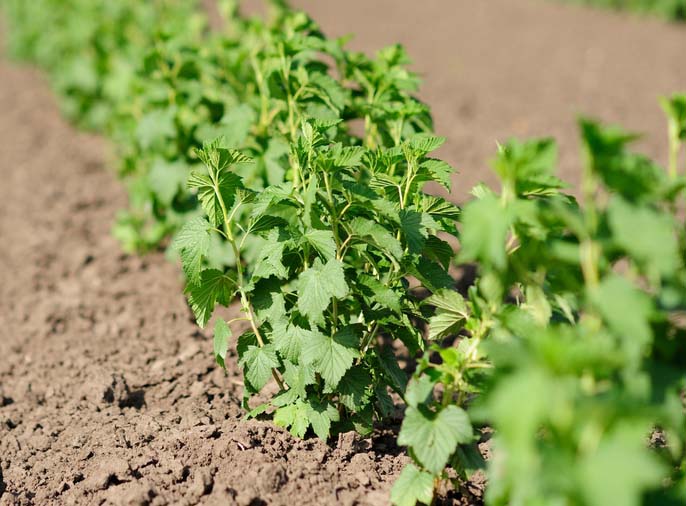

For planting, you should choose seedlings that are 1 or 2 years old.
When choosing seedlings, you should give preference to plants no older than 1-2 years of age.Plants should be branched, have sufficiently developed buds and root systems. The presence of dried roots and twigs, as well as various mechanical defects, must not be allowed. The plant must have at least three skeletal roots, each of which must be more than 20 cm long.
Step-by-step process of planting black currant
On the eve of planting currants, you need to prepare a mixture to fill the planting pits: mix garden soil with a bucket of humus (or compost), add 120 g of superphosphate, 25 g of potassium nitrate and 250 g of wood ash.
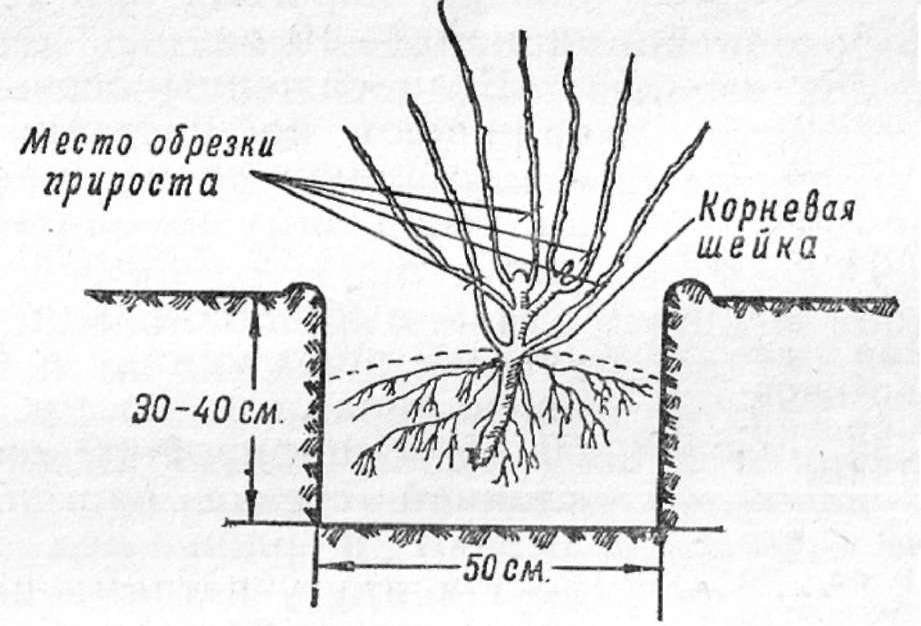

Black currants Selechenskaya and Selechenskaya-2 are planted according to the standard scheme
- Pits 45 x 45 x 45 cm are dug in the prepared area. The dimensions of the holes are set by the root system: the roots must be freely placed in the recess, without touching the walls.
- Next, you should pour the nutrient mixture into the hole and spill it well with water.
- It is preferable to place the currants at an angle of 45 degrees. The root collar should be slightly recessed. Weak plants should be planted in twos, tilted in opposite directions.
- Carefully straightening the roots, you need to fill up the earth, excluding the formation of voids.
- Around the plant, you need to organize a hole with a diameter of 40 cm, which should be well shed with water and mulched.
- The seedling needs to be cut, leaving 3-5 formed buds.
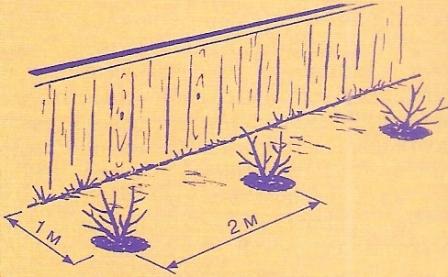

Currant does not like close proximity
When planting several currant bushes, you need to adhere to the following intervals:
- between bushes - 1 m;
- between rows - 2.5 m;
- planting in trenches - 0.7 m.
Video: planting black currant
Layering method
The process begins by digging shallow grooves in early spring. Annual shoots are shortened to 1/5 of the length - this stimulates the growth of the kidneys. The shoots are laid in grooves, tightly pinned with hooks and sprinkled with black earth. When the length of green shoots from the buds reaches 10-12 centimeters in height, they are covered with fertilized soil to half. It is also necessary to ensure regular abundant watering throughout the growing season.
With the onset of autumn, the grooves should be opened, the layers should be separated from the main bush and planted. For strong seedlings, a permanent place of growth can be determined, weak ones are grown in a school. Up to 6-8 seedlings are obtained from one shoot per season.
Currant care
In order for the black currant varieties Selechenskaya and Selechenskaya-2 to annually please with rich harvests of excellent berries, it needs certain systematic care. Particular attention should be paid to young bushes. For good formation of bushes, it is necessary to feed the seedlings on time and keep the moisture of the soil under control.
Pruning
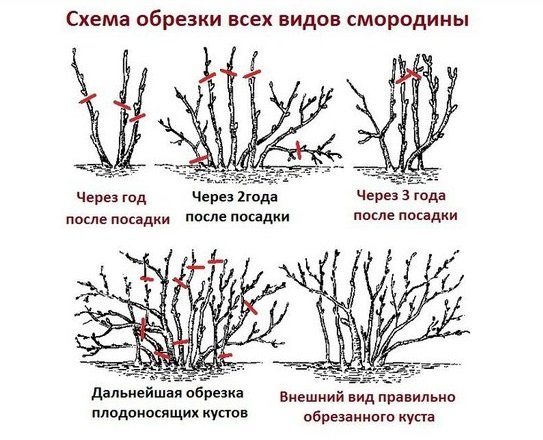

Blackcurrant bushes bear fruit abundantly for a long time and regularly only if the obsolete branches are replaced by young, more fruitful ones
Correct formation of a currant bush in the first 3 years becomes a determining factor in its yield. To harvest a full-fledged crop of currants of the varieties Selechenskaya and Selechenskaya-2 annually, you need to regularly prune shoots:
- During planting, the seedling is pruned, keeping 3-5 buds;
- A year later, it is necessary to cut out all the shoots from the shrub, leaving 4–6 of the healthiest ones, which need to be pinched in the summer for two or three buds;
- For the next couple of years, the procedure must be repeated, keeping 4–6 young shoots annually, while pinching the old ones;
- In the future, only sanitary and rejuvenating pruning should be performed, the rules of which are described above;
- When pruning adult plants, it is necessary to remove six-year-old shoots, diseased ones lying on the ground and damaged branches.
Video: determining the age of branches
Watering
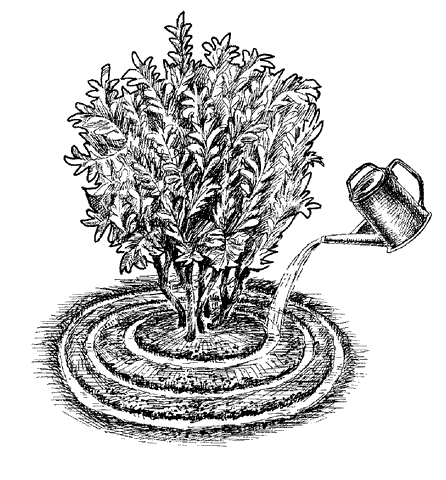

When watering, water is poured into grooves 10-15 cm deep, which are dug around the bush at a distance of 20-30 cm from the end of the branches
Black currants Selechenskaya and Selechenskaya-2 are extremely fond of watering. The lack of watering leads to a shallower crop and a lag in development. Young seedlings will grow and develop better if they are watered a couple of times a week, 1-2 buckets per plant, taking into account weather conditions and the age of the bush.
Intensive watering is required in the following cases:
- During the ripening period of the fruit. If the stage of berry pouring began during a drought, it is required to additionally moisten the soil.
- After the final harvest.
- In October, you need to carry out sub-winter watering.
The next day after watering the currants, it would be nice to loosen the ground and weed perennial weeds. Since the roots of currants are located superficially, loosening should be carried out no deeper than 5-7 cm.
Fertilization
An excellent harvest of high-quality currant currant cannot be obtained without adequate nutrition for the plant. Again, the black currant of the Selechenskaya variety is much more picky about the presence of dressings.
The first couple of years after planting, feeding currants in spring and autumn is quite acceptable with organic fertilizers alone: mullein (1: 4) or bird droppings (1:10). Introduce from the calculation - one bucket per plant.
After three years, the currants begin to actively bear fruit, as a result of which mineral supplements should be added to organic dressings:
- In the spring, scatter 30 g of carbamide under each plant, dig up the ground a little and mulch with humus or compost.
- In autumn, under each plant, put 4 kg of manure or compost, 15–20 g of potassium sulfate and 30 g of superphosphate. Or replace it with wood ash (200–400 g).
In addition, it is advisable to feed the plants with an aqueous solution of manure (1: 4) or bird droppings (1:10). For each shrub, 10 liters of solution are applied. You should feed the currants in this way:
- In early spring, until the buds have blossomed;
- At the end of flowering;
- At the stage of crop ripening;
- At the end of the harvest.
Shelter for the winter
The black currant of the Selechenskaya variety withstands wintering and spring frosts well, without the need for shelter. But the inflorescences of the Selechenskaya-2 variety react hard to return frosts, as a result of which there is a possibility of losing a decent part of the crop.
If there is a danger of late spring frosts, the following series of measures should be observed:
- Shelter the plants with a white non-woven fabric.
- Moistening the soil under the plant and spraying directly on the currant bush.
- Smoke protection by making fires from low-burning materials (damp branches, straw, rags, etc.)
Pruning bushes
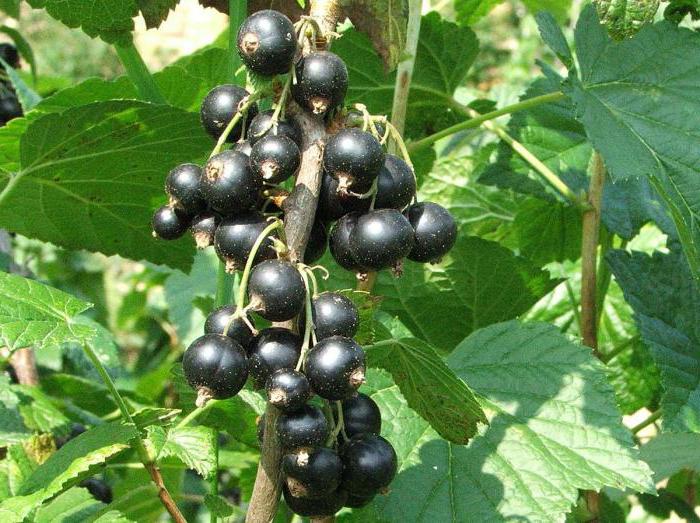

To evenly form the shrubs and maintain a high level of productivity, gardeners practice pruning. According to the description of the variety, the Selechenskaya currant bears fruit on last year's growth. Removing old branches and thinning bushes is a mandatory set of measures for plant renewal.
In the year following planting, no more than 5 developed and well-grown basal shoots are left. Unripe ends must be removed.
Sick, weak, dry and thickening shoots are removed. In the case of zero (grown independently from the soil) seedlings, a maximum of 4 of the largest and strongest are left. The optimal distance between young shoots is 10-15 centimeters.
The currant bush of the Selechenskaya variety is considered fully formed upon reaching the age of five. The plant should be a collection of 10 to 20 developed shoots of various ages. There are no more than 5 branches on each.
To rejuvenate the plant, gardeners resort to pruning old branches, this stimulates the growth of new ones.
Important aspects of the pruning process:
- Removal of unusable branches from bushes should be done either in March before bud break, or at the end of October before the onset of severe frosts.
- Branches from 5 years and older are subject to mandatory removal.
- It is forbidden to leave hemp - they can become centers of the spread of diseases and pests.
- Systematic thinning of currants is necessary. An increase in the density of the bush will lead to its increased soreness.
- It is recommended to remove shoots of zero order, except for strong and well developed ones.
Diseases and pests
With untimely care, the Selechenskaya and Selechenskaya-2 currants may be affected by various diseases and pests. Although these varieties are quite resistant to bud mites and powdery mildew. Subject to the basic principles of care, and spraying shrubs with special means, currants will delight with good development and productivity.
Table: diseases and pests of currants and methods of dealing with them
| Disease / pest | Signs of defeat | Preventive measures | Control methods |
| Anthracnose | Fungal disease. The bark loses its elasticity and cracks. Small tubercles appear in the cracks. The branches dry up | Periodic planting thinning; digging the soil under the bush; collection of fallen leaves | Spraying the bush with copper sulfate (for 1 liter of water, 4 g of sulfate). Consumption rate for an adult bush is 2 liters. Using the drugs Cuprozan or Phtolan according to the instructions |
| Yellow veined mosaic | A viral disease manifested in a yellow pattern at the veins of leaves | Using healthy planting material | Spraying the bush with a 1% solution of Bordeaux liquid after flowering. With a large defeat of the bush, its uprooting and burning |
| Terry (reversion) | Viral disease. The leaves become smaller and become purple, the berries are not tied | Regular application of phosphorus and potassium fertilizers, as well as foliar dressing with trace elements | Affected bushes are uprooted and burned |
| Drying of shoots (tuberculariosis) | The bark peels off, the shoots die off entirely from the top | Pruning damaged shoots | Spraying the bush with a 1% solution of Bordeaux liquid in early spring, after flowering and in autumn |
| Leaf gall aphid | A small insect about 2 mm long pierces the leaves from the underside and feeds on their sap. The leaves acquire characteristic swellings, curl and wither. Shoots with affected leaves dry out | Planting next to currants onions, dill, garlic, parsley, mint, marigolds. Spraying foliage with infusions of tobacco, wood ash, onion husks, soda ash, liquid soap. Destruction and burning of damaged shoots and leaves | Treatment with Karbofos according to the instructions for the preparation before bud break and immediately after the appearance of the leaves |
| Spider mite | The usual time for the appearance of a pest up to 0.5 mm in size is May. Leaves turn reddish, from the bottom surface in a cobweb | Burning fallen leaves, loosening the soil and removing weeds | Treatment with insecticides like Vofatox before bud break according to the instructions for the preparation. Applying a colloidal sulfur solution a few days before flowering |
| Kidney mite | The presence of a mite in the buds of a plant manifests itself in their abnormal large size. The leaves of their buds will be small and pale. Productivity is declining | Removal and burning of diseased kidneys, and with intense tick damage, and whole branches. Planting next to currant, garlic and onion. Using healthy seedlings when planting | Spraying during the flowering period with an infusion of mashed garlic (150 g per 10 l of water) |
| Currant glass | The glass moth larvae develop under the bark, and their caterpillars penetrate the middle of the branches and find food there. The branches dry and die | Regular loosening of the soil. To destroy caterpillars and pupae of the glass in May and June, sprinkle the ground under the bushes with a mixture of ash, tobacco (200 g each), ground pepper and mustard (1 tablespoon each). The consumption rate of the mixture is 2-3 tbsp. spoons on the bush. Cutting and burning diseased branches. Timely cutting of branches over 5 years old | Treatment with Fitoverm or Iskra preparations according to the instructions for them |
| Blackcurrant berry sawfly | The larvae of the pest penetrate the berries and feed on the seeds. Berries shriveled | Collection and destruction of diseased berries. Burning fallen leaves, loosening the soil and removing weeds | Treatment with Ambush or Etaphos preparations according to the instructions for them after flowering |
Photogallery of diseases and pests of black currant


The difference between a healthy kidney and an infected one is clearly visible.
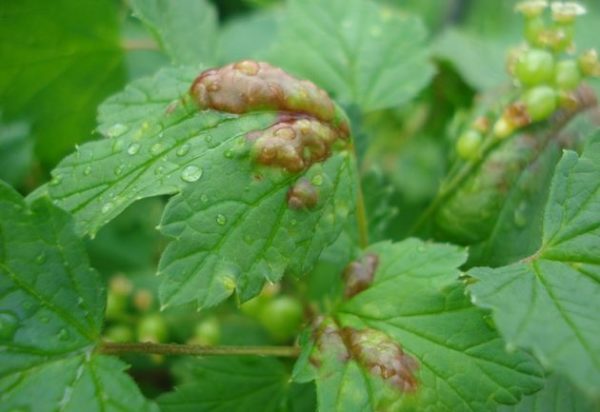

Leaves in aphids have characteristic bulges
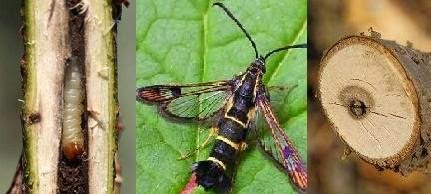

Caterpillar and butterfly of currant glass
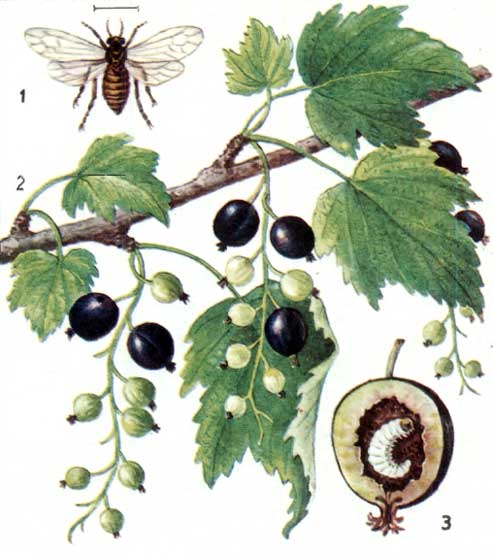

The sawfly larva feeds on currant seeds
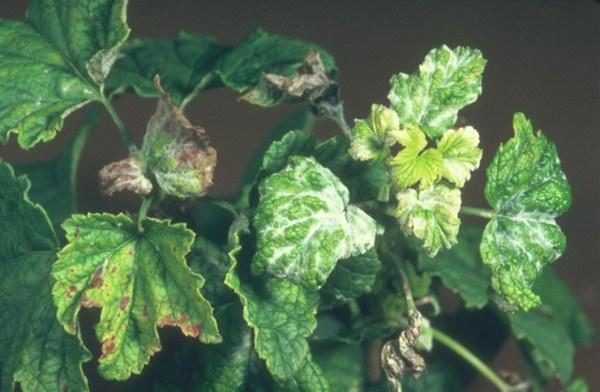

Spider mite work
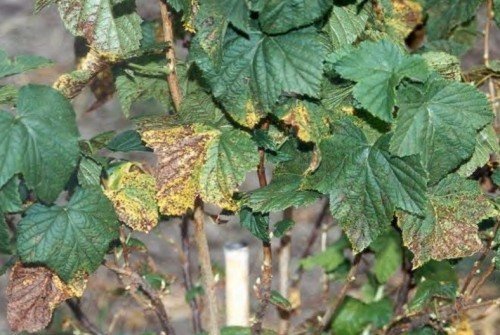

Anthracnose develops especially in rainy weather.


With a strong defeat by doubleness, flower brushes turn into thin branches with scales instead of flowers


Drying of shoots is one of the specific diseases


Yellow veined mosaic is a viral disease, upon detection of which the affected plants should be uprooted and burned
Harvesting


The varieties Selechenskaya and Selechenskaya 2 are distinguished by annual bountiful harvests
A distinctive feature of the black currant varieties Selechenskaya and Selechenskaya-2 is the ripening of berries in July. Currant yield is usually around 1.5–2 kg per plant. The maximum possible reaches 5 kg for the Selechenskaya variety and 3 kg for the Selechenskaya-2 variety. Moreover, the berries at Selechenskaya-2 are an order of magnitude larger.
In order for the berries to stay fresh longer, harvest should be done on a sunny day. Berries are easily torn off the brush without damaging the surface. As a result, the harvested crop tolerates transportation well.
The harvested crop can be easily stored at temperatures from +2 to +4 ° C for 10-14 days. To preserve the berry for a longer time, it is preferable to send it to the freezer for freezing, or dry it in the shade or in a dryer.
Currants of these varieties are perfect for preparations: jams, confitures, compotes and more. It is widely used for cooking baked goods and other cooked dishes. Dried berries and leaves are an excellent addition to herbs, tea and when cooking compotes. Also, for longer storage in the refrigerator, freshly picked berries can be grated with sugar. Currant leaves are good for adding to pickling and pickling.
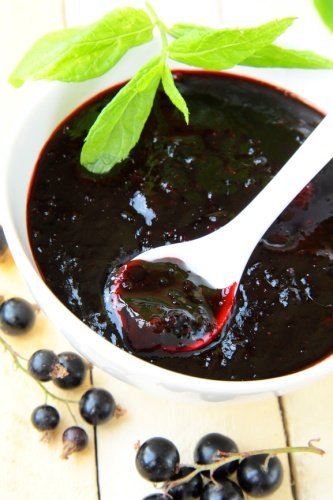

Jam is the most common blackcurrant preparation
How to plant a crop on a site
To obtain a harvest, gardeners must follow the planting rules, which determine the degree of plant development and further yield.
Optimal timing for planting
You can plant berries both in autumn and spring. However, for early ripening, the autumn planting method is used. The deadline is from September 20 to October 15. Planting time differences may vary by region and weather conditions.
Selection of seedlings
When choosing a seedling, attention is paid to the root of the culture. The root should consist of 3-4 small processes covered with a mesh of small auxiliary ones. There should be no damage or rot at the root, and the system must be inspected for seals that indicate a disease. The height of the seedling should be no more than 35 cm. The age of the seedling is 2 years.
See also
Description and characteristics of Natali red currants, planting and careRead


Site preparation
Before planting a shrub, you need to carefully inspect the site and apply all the necessary fertilizers. It is recommended not to use the site during the year in order to saturate the soil with the necessary useful components. All vegetation from the site must be removed, dug holes up to 30-35 cm deep. Mix manure with soil and cover the bottom of the hole. The soil should be moderately acidic and not previously used for such shrubs.
Step-by-step disembarkation process
Planting cuttings in the ground is carried out according to the following algorithm:
- make a hole in the prepared hole;
- the seedling, together with the soil at a slight slope, is lowered into the prepared hole, and the roots are straightened;
- the root is sprinkled with earth and compacted;
- the hole must be watered with warm water with the calculation of at least 2 buckets per bush;
- sprinkle the watering area with dry soil.
The difference in the methods of planting currant varieties is that this type must be placed in such a way that the cutting is covered with a layer of soil at least 10 cm from the root collar.
